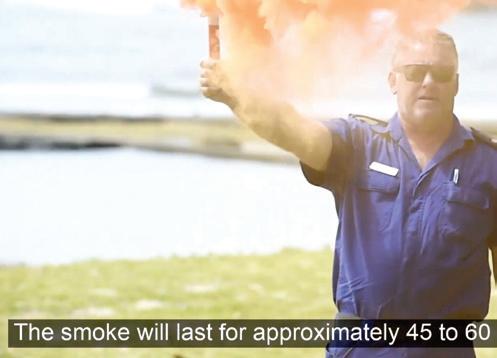
4 minute read
Boating popularity booms over past year • Groundbreaking technology envy of others
Groundbreaking technology envy of others
IT systems developed to support volunteers in mission to save lives.
Marine Rescue NSW is continuing to introduce new and upgraded technology to support its members in their work to save lives on the water.
A revamped member records system was rolled out in midFebruary, followed soon after by a new rostering system for our 45 units.
This follows the introduction of a new Incident Management System to the groundbreaking Seahawk vessel logging and tracking network in September last year.
IT Director Florian Glajcar said Marine Rescue’s IT systems had been purpose-developed to help volunteers in their vital work to keep boaters safer on NSW waters.
“This is not technology for technology’s sake. It has been carefully designed to give our members the tools they need to safely and successfully manage their operations,” he said.
The Otter membership system records a range of important information on volunteers, including their service records, qualifications, personal contact details and positions they hold in their unit.
“Otter is the cornerstone of our suite of integrated IT tools. Everything links back to it,” Mr Glajcar said. “Data is drawn from the system to authenticate the identity of members logging in to use all our other applications, such as Seahawk, the MRNSW e-shop and the Radio Club member system.”
The updated Otter system now holds additional details about members, such as relevant health information like allergies and doctor’s contacts, their ratings, licences, first aid certificates, marine drill currency and uniform sizes and preferences.
It records an individual’s total length of service in one file, even if they have left and returned to the organisation, to help ensure they receive appropriate MRNSW and national service recognition and enables training certificates to be easily downloaded and printed.
Data from the original Otter - developed by Mr Glajcar and NetBit and introduced in early 2013 - was migrated to the updated system over 24 hours from February 18.
MRNSW IT Developer Oscar Willems worked with units and operational staff to develop the new online roster system to simplify the task of rostering volunteers for vessel, radio and other duties.
Mr Willems said the system was another way Headquarters supported units by helping them work smarter, not harder.
“It will save our rostering officers a lot of time and effort in cross-
Northern Rivers Regional Operations Manager John Murray (left) and Director Operations Andrew Cribb meet members of Volunteer Marine Rescue Queensland to demonstrate our IT systems.
referencing members’ availability and qualifications for various duties,” he said. “We’ve worked closely with our units on the system’s development and within hours of it going live, six units had created online rosters.”
The system enables members to indicate their availability - or absence - for a designated period and once a roster is published, to take on additional shifts to fill gaps or seek someone to swap shifts they may no longer be able to perform.
The rostering system also is integrated with Otter so that if an individual does not have the required qualifications for a specific duty, they cannot be assigned that role.
Director Operations Andrew Cribb and Northern Rivers Regional Operations Manager John Murray headed to Brisbane in February to demonstrate Seahawk and the new Incident Management System to Queensland Fire and Emergency Services and Volunteer Marine Rescue Queensland personnel.
“We’re always happy to share the benefits of our technology and experience with our volunteer marine rescue colleagues,” Mr Cribb said. “Our integrated technology is is the envy of services around Australia.”
Mr Cribb said VMRQ already used Seahawk to transfer the safety watch over boats crossing from Queensland waters to MR Point Danger and could see the benefits of extending its use beyond the cross-border region.
Project to help hearing impaired stay safer
As part of a commitment to make its vital safety and preparedness information more accessible, MRNSW is reaching out to deaf and hearing impaired members of the boating community.
Working with MR Jervis Bay volunteer and Auslan interpreter Sean Sweeney, a series of eight targeted videos is being developed for members of the Deaf Community and those with a hearing impairment. Each video will be signed by Sean, with the videos also subtitled. Topics such as Logging On and Off, wearing a lifejacket, maintaining your vessel, how to use a flare and understanding boating weather will be covered. Sean said he was delighted to be part of such an innovative project.
“Boating is a popular pastime within the Deaf Community and these videos will help ensure that it is a safe as well as an enjoyable one,” he said.
The videos will be uploaded to the MRNSW website and promoted within the Deaf Community. MRTV episodes also are now fully subtitled. The monthly program is a key channel for our safety information as well as stories on MRNSW activities and the addition of subtitles will increase the accessibility of this important community boating resource to enhance public boating safety.

MRTV is now subtitled.










